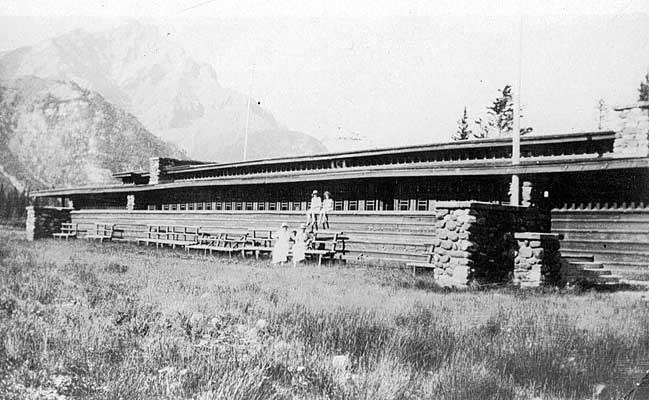BANFF – An organization behind a proposal to build a replica of a pavilion at the Banff recreation grounds designed by Frank Lloyd Wright, one of the most distinguished architects of the 20th Century, may pull the plug.
Officials with the Frank Lloyd Wright Revival Initiative – a group dedicated to re-building demolished Wright-designed structures on their original sites – say they are looking for a guarantee from the Town of Banff that they can build if they meet all of council’s terms.
Michael Miner, an American documentary filmmaker and ardent Wright fan, said he is surprised by the “lukewarm reception our offer has elicited,” noting he has spent $40,000 US so far to meet some of council’s conditions to advance plans to rebuild the 10,000-square-foot pavilion.
“We are expected to spend several hundred thousand dollars without any guarantee that the building will ever be realized,” he wrote in a letter presented to council on July 15.
“This is not a risk our organization is willing to take.”
The Banff pavilion, which was demolished in the 1930s, was one of only two Wright buildings in Canada. The other is a private cottage in Ontario that still stands.
In 2016, Banff council supported the project in principle, but directed the Frank Lloyd Wright Revival Initiative to conduct a feasibility study and cost analysis to help the municipality better understand the implications of proceeding with the project.
Specifically, council asked that the study include an overview of the scope of work required to build the structure, evaluation of site location alternatives, environmental assessment requirements and estimates of building design and construction costs.
It's also to include any infrastructure improvements needed to service the building, long-term operation and maintenance costs, funding sources, program options and an assessment of the economic impact of the project on the community.
Town of Banff officials say it’s important to emphasize that it’s been three years since council first supported the FLWRI concept in principle.
“Council clearly stated that they cannot move forward without a comprehensive feasibility analysis,” said Randall McKay, director of planning and development for the Town of Banff,
McKay said Miner and his team have provided an excellent overview of the historical context of the Frank Lloyd Wright pavilion in Banff, as well as supporting rationale for considering the reconstruction of the building.
“However, aside from providing an overview of site location alternatives, a summary of construction costs and some programming options, significant more analysis is required prior to presenting a report back to council for their consideration,” he said.
Banff’s recreation grounds master plan calls for the design of a multi-purpose building, which is tentatively scheduled for 2021.
“In the interim, the Town of Banff is endeavouring to keep site planning options open provided they do not conflict with the master plan for the site,” McKay said.
“But time is indeed running out as there are decisions that must be made to move other recreation related projects forward.”
In his letter to council, Miner said he wanted to engage directly with council before spending any more money, but was told by administration that his request was premature at this point.
Miner said it seems that direct communication between FLWRI and the Banff town council that he considers essential will not be possible until after the terms of reference are satisfied.
“In essence, we cannot speak to the council without completing the terms of reference, and we will not complete the terms of reference until we can speak to council,” he wrote.
“We are saddened because this has not been the partner relationship we had hoped for when the project began.”
Wright, who is one of the most distinguished and famous architects of the 20th Century, designed and built more than 500 structures, many of which have become icons of design, including The Guggenheim Museum in New York and Fallingwater in Pennsylvania.
Along with his only Canadian student, Francis Conroy Sullivan, he designed the Banff National Park Pavilion in his rustic Prairie School style in 1911 at the request of the federal government.
Construction began in 1913 and finished the following year, but the building was demolished in the late 1930s after suffering severe flood damage.




